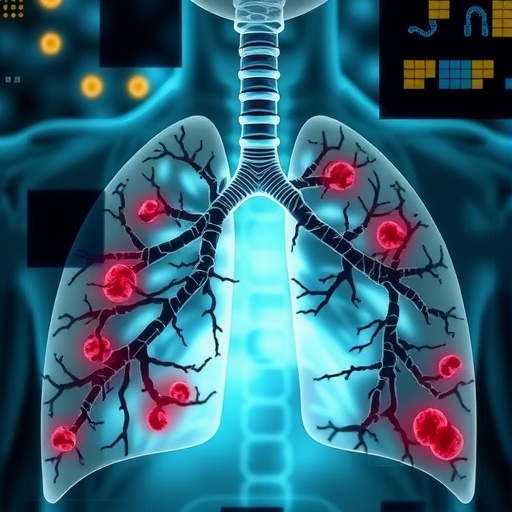
Credit: Photo by L. Brian Stauffer
CHAMPAIGN, Ill. — The Medicaid expansion facilitated by the Affordable Care Act led to increases in the identification of undiagnosed HIV infections and in the use of HIV prevention services such as preexposure prophylaxis drugs, says new research co-written by a team of University of Illinois Urbana-Champaign experts who study the intersection of health care and public policy.
The research by Dolores Albarracín, a professor of psychology and of business administration at Illinois, and Bita Fayaz Farkhad, an economist and a postdoctoral researcher in psychology at Illinois, found that expanding eligibility for Medicaid, the federal-state health insurance program for low-income individuals, was associated with a 13.9% increase in HIV diagnoses.
The newly discovered infections were concentrated among those likely to be affected by the health insurance expansion: individuals engaged in injection drug use in low-income and rural counties with a high share of pre-ACA uninsured rates.
The changes in new HIV diagnoses, awareness of HIV status and additional PrEP use were not simply due to an increase in HIV infections or to an increase in infection risk, but to the expanded access of health insurance through the Medicaid program, the researchers said.
“We find that HIV diagnoses increased in Medicaid expansion states compared with nonexpansion states, and that the general knowledge that HIV can be prevented through prophylaxis drugs also increased,” said Farkhad, the lead author of the research. “When we consider these two findings together, our conclusion is that access to health care and health insurance has increased the percentage of people living with HIV who are aware of their status, which is an important finding for HIV prevention efforts. According to 2016 Centers for Disease Control and Prevention estimates, a high proportion of new HIV infections were transmitted by people who were unaware of their HIV-positive status.”
“Increasing community awareness of HIV and increasing individuals’ awareness of their HIV status is key to reducing new infections,” said Albarracín, also the director of the Social Action Lab at Illinois. “This study provides important evidence suggesting that increasing health insurance coverage may play a critical role in curbing the spread of HIV.”
The researchers analyzed the effects of the Medicaid expansion using data from 2010-17 on HIV diagnoses per 100,000 population, awareness of HIV status and PrEP use by calculating differences in new diagnoses and PrEP use before and after states adopted the expansions. They compared the differences between treatment counties – that is, all counties in states that expanded Medicaid – versus control counties in states that didn’t expand Medicaid.
As access to health insurance and HIV testing improved with the health insurance expansions, a higher percentage of people living with HIV were newly aware of their status, as reflected in rising numbers of HIV diagnoses.
“Although many social factors contribute to rural-urban and other social-health disparities, health insurance accounts for much of the variation in access to care. Hence, expanding health insurance coverage has important implications for HIV prevention and disease transmission,” Farkhad said.
“A popular misconception of the ACA” – former President Obama’s signature health care law – “is that it’s an unwieldy failure of health care policy,” Albarracín said. “But our research points to that being false, as the Medicaid expansion prong of ‘Obamacare’ has been quite successful, providing evidence that expanding access to health insurance is associated with improvements in several HIV-related outcomes. This is clearly one measure that is not a failure in terms of people’s lives and health.”
Another finding is that the main increase in new HIV diagnoses stems from intravenous drug injection.
“This finding is not surprising given that the U.S. is in the midst of an opioid crisis, and the increase in injection drug use has led to a greater risk of illness due to needle sharing,” Farkhad said. “Because there is no evidence that Medicaid expansions affected substance use, the increase in HIV diagnoses attributed to injection is consistent with the improved access to care among those with substance use disorder. Also, people with substance use disorders were more likely to be uninsured prior to the ACA than the general population, which further reinforces the idea that expanding Medicaid is a good thing for public health.”
The study has important health policy implications, the researchers said.
“It’s a very important lesson in terms of, if you want to eradicate HIV, you’re going to have to increase health coverage,” Albarracín said. “Otherwise, HIV will continue to spread under the public health radar. The findings about drug use are also important because our team is leading an initiative to prevent HIV infections associated with drug use in 200 counties in Appalachia and the Midwest.”
“For COVID-19, public health officials are constantly emphasizing how important it is for people to test, test, test,” Farkhad said. “And it’s the same idea here. We show how important it is to have insurance coverage to increase testing, and that those extra tests were necessary and have increased the rate of HIV diagnosis.
“It also speaks to the role of access to affordable health care plans. The states that didn’t expand Medicaid, especially the Southern states where opioid use is prevalent, have a very high rate of uninsured compared to other states. Expanding insurance coverage to low-income individuals through Medicaid could facilitate HIV prevention and improve HIV-related health outcomes.”
###
The paper was published in the American Journal of Preventive Medicine.
David R. Holtgrave of the University of Albany was a co-author of the research.
The research was supported by the National Institute of Allergy and Infectious Diseases and the National Institute of Drug Abuse.
Media Contact
Phil Ciciora
[email protected]
Original Source
https:/
Related Journal Article
http://dx.




